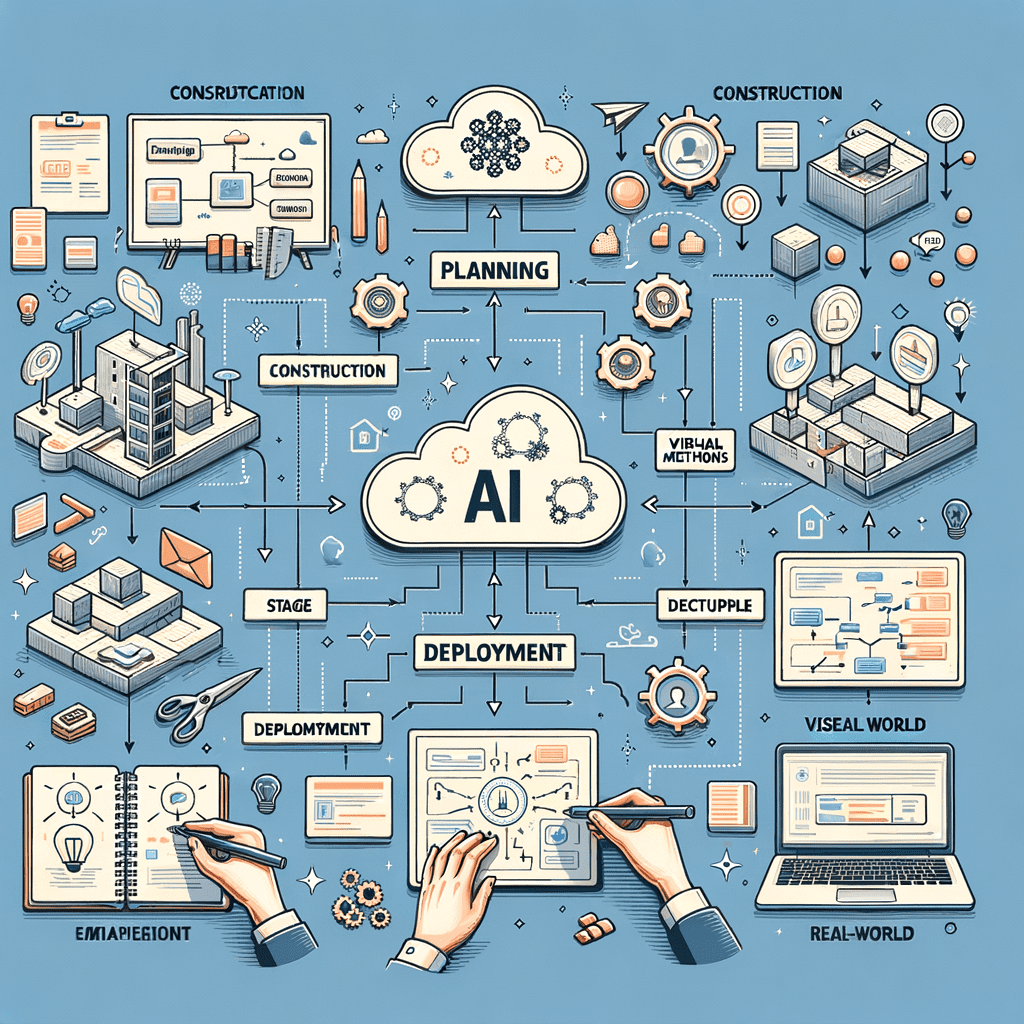AI deployment transforms businesses. This post explores practical AI deployment, from planning to real-world applications and available resources. Whether you’re starting with AI or refining your current AI strategy, this guide offers valuable insights into data storage and other considerations for deploying AI models.
Planning for AI Deployment
Before deploying AI, define clear goals. What should your AI achieve? This might involve higher efficiency, better customer experience, or automating tasks.
Defining objectives guides your model choice. A 2024 F5 study found that data quality issues hinder successful AI deployments. Clear goals prevent such problems.
Building and Training Your AI Model
After setting goals, determine the right AI model. Various AI models exist, some for image recognition, others for text analysis or prediction. Image recognition suits automated product sorting, while language models like GPT-4 power chatbots.
Building involves coding with machine learning frameworks or customizing a pre-trained model. This stage involves selecting training data. Deployment also involves packaging the data preparation code for correct data formatting. Data privacy and security measures are crucial, especially for integration with other business systems.
Choosing the Right Deployment Method
Common methods include Cloud and Edge AI deployment. The environment depends on factors like cost, scalability, latency, and data location rules.
This involves cloud services, on-device processing, or tools like Zapier. Cloud deployment offers availability and scalability but adds latency. Cloud computing solutions like NVIDIA EGX and Fleet Command provide flexibility between cloud providers. Zapier connects AI models to platforms like Google Sheets for automated predictions. Carefully consider your deployment method for model applications.
AI Deployment: Integration and Monitoring
Integrating AI with business systems can be complex. It requires APIs to connect systems like databases and web apps.
APIs enable AI systems to communicate, creating interactive interfaces. For example, AI-powered product suggestions need connected databases, user history, and inventory, communicating via APIs.
Testing during integration identifies conflicts early, minimizing production complications. Post-deployment monitoring is crucial. It measures performance, fixes bugs, and catches model drift, ensuring lasting impact and ROI.
Real-World Examples of AI Deployment
Deployed AI models power many applications:
- Life Sciences: Generative AI for virtual drug screening. Cloud deployment allows easy scaling for complex computations.
- Web App Development: AI chatbots enhance customer service. NVIDIA NeMo enables efficient content generation for better user experiences.
- Higher Education: Automating feedback on educational video transcripts with an NLP AI platform. Local edge processing works efficiently, providing instant data without cloud server interaction.
Challenges and Solutions in AI Deployment
AI deployment faces challenges. Data governance is a major concern, with 72% of businesses experiencing data quality issues. Scaling data storage is a key bottleneck, especially with 75% of enterprises implementing AI. Secure data storage and privacy laws demand careful management.
Monitoring is vital to prevent data leaks and attacks. Tools like Model Flighting, CI/CD Pipelines, and robust monitoring, as described by Microsoft, address these challenges. Azure machine learning can be used in these deployments. Large language models are one application for these tools.
FAQs about AI Deployment
What is deployment in AI?
AI deployment makes a trained AI model usable in real-world environments. This includes integrating the model into applications and testing its effectiveness. The chosen deployment method influences resource allocation.
What is a deployer of AI?
An AI deployer ensures a smooth transition of the AI model to production. They handle the technical aspects and manage the deployment process. Professional services sometimes aid in this transition.
What is the main challenge of AI deployment?
Integrating with existing systems is a primary challenge. It involves designing APIs and modifying existing processes. Data scientists can be particularly helpful for model implementation during this phase.
What is the lifecycle of AI deployment?
The AI deployment lifecycle typically involves:
- Planning.
- Building/training the model.
- Choosing a deployment method.
- Integration and monitoring.
This process helps identify issues early and ensures the AI initiative meets objectives.
Conclusion
AI deployment maximizes organizational impact, boosting productivity, efficiency, and work/life balance. Methodical planning before AI deployment yields higher ROI.
By applying these frameworks, business leaders gain clarity and make strategic investments in AI solutions. This understanding empowers businesses of all sizes to transform operations through effective AI deployment.






